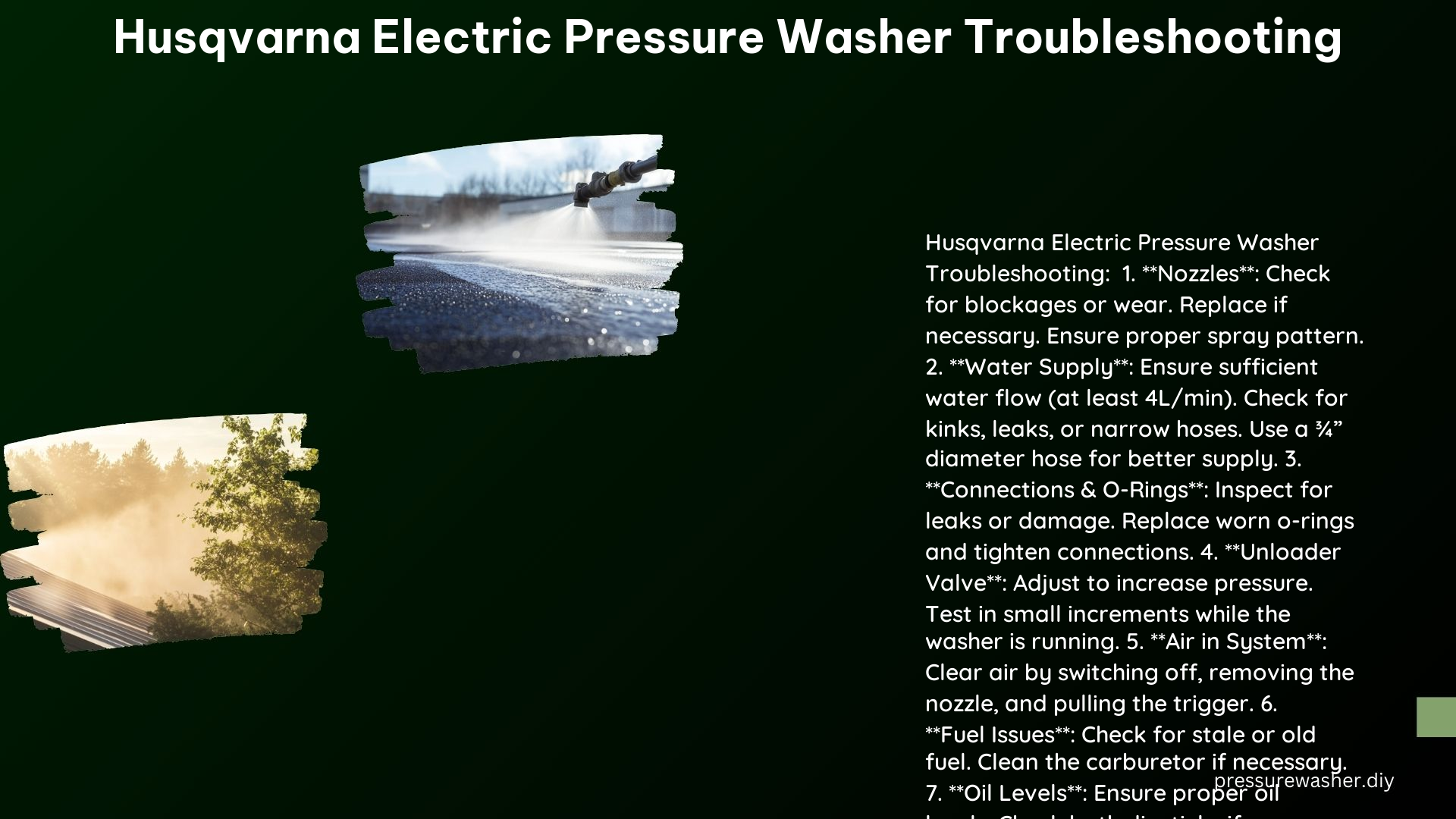Husqvarna is a renowned brand in the world of outdoor power equipment, and their electric pressure washers are no exception. However, like any machine, they can sometimes encounter issues that require troubleshooting and repair. In this comprehensive guide, we’ll dive deep into the common problems faced by Husqvarna electric pressure washer owners and provide detailed solutions to get your unit back in top shape.
Why Does My Husqvarna Electric Pressure Washer Suddenly Lose Pressure During Use?
- Blockages and Leaks:
- Check the nozzle, hose, and wand for any blockages. Even a small obstruction can significantly reduce the pressure output. Ensure all connections are tight and free of leaks.
-
Inspect the inlet filter screen, which is typically located near the water inlet. Clean or replace the filter if it’s clogged with debris.
-
Water Supply:
- Verify that the water supply is sufficient and providing the recommended flow rate. Husqvarna electric pressure washers typically require a minimum of 3.5 GPM (gallons per minute) at the inlet.
- If using a low-pressure tap, try connecting to a higher-pressure source, such as an outdoor spigot or a dedicated water supply line.
-
Check for air in the system by switching off the washer, removing the nozzle, and pulling the trigger. If air is present, it can cause pressure fluctuations.
-
Hoses and Connections:
- Ensure the inlet hose diameter is at least 3/4 inch (19 mm) to provide sufficient water flow.
- Inspect the high-pressure outlet hose for any kinks, cracks, or damage that could restrict the flow.
-
Check the o-rings at all connections for wear and replace them if necessary to prevent leaks.
- The unloader valve is responsible for regulating the pressure in the system. If it’s not functioning correctly, it can cause pressure drops.
- Adjust the unloader valve in small increments while the washer is running and the spray is activated. Avoid over-pressurizing, as this can damage internal components.
What Are the Common Causes of a Husqvarna Electric Pressure Washer Not Producing Any Water?

- Fuel Issues:
- Check the fuel level and quality. Old or stale fuel can clog the carburetor and prevent the engine from starting.
-
If the carburetor is blocked, clean or replace it to restore proper fuel flow.
-
Spark Issues:
- Verify that the spark plug is producing a strong spark using a spark checker.
-
Ensure the spark plug is clean and not flooded with fuel.
-
Air in the System:
- Check for any air leaks in the hoses and connections. Air in the system can prevent the pump from building up pressure.
- Bleed the system by running water through it with the nozzle removed, allowing any trapped air to escape.
How Do I Troubleshoot and Fix a Husqvarna Electric Pressure Washer That Starts But Then Stops After a Few Minutes?
- Fuel and Oil:
- Check the fuel level and quality. Ensure the oil level is sufficient and the oil is clean.
-
If the fuel is old or contaminated, replace it and clean the carburetor.
-
Spark and Ignition:
- Verify the spark at the plug using a spark checker.
-
Ensure the spark plug is clean and not flooded with fuel.
-
Air in the System:
- Check for any air leaks in the hoses and connections.
- Bleed the system by running water through it with the nozzle removed, allowing any trapped air to escape.
Technical Specifications for Husqvarna Electric Pressure Washer Troubleshooting
Husqvarna PW3200:
– Engine: Briggs and Stratton 208 cc
– Oil capacity: 20 oz (0.59 L)
– Fuel capacity: 0.8 gallons (3 L)
Husqvarna PW3100:
– Engine: Briggs and Stratton EXi 875
– Oil capacity: 18 oz (0.53 L)
– Fuel capacity: 0.8 gallons (3 L)
